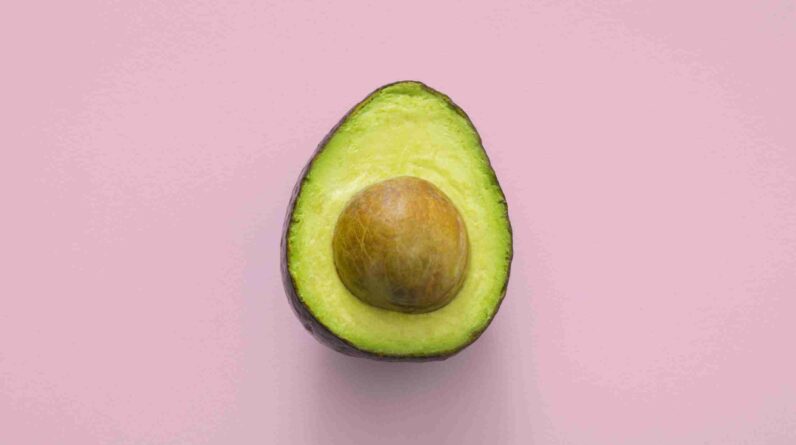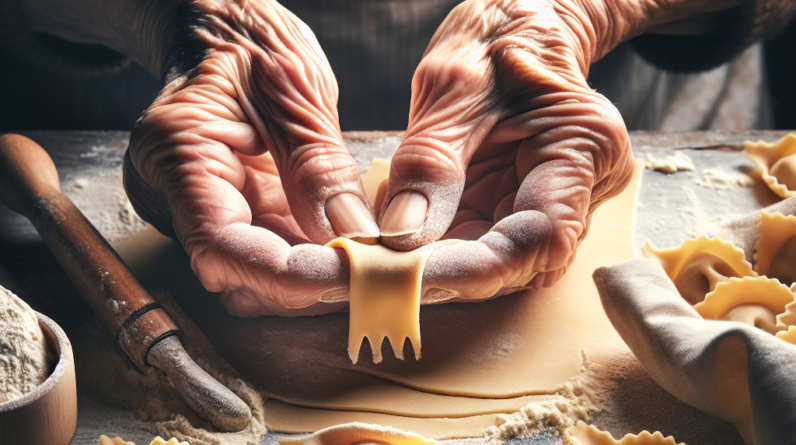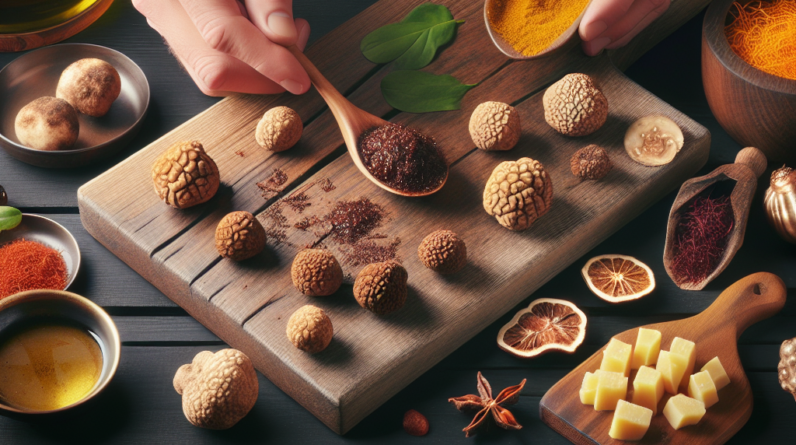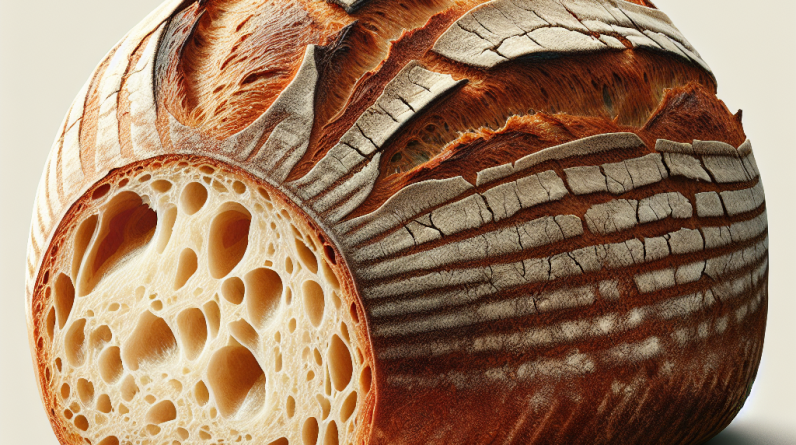Indulge yourself in the tantalizing world of creamy, authentic Italian gelato as we uncover the secret that has enchanted taste buds for generations. Italian gelato, renowned for its velvety texture and intense flavors, holds a mystique that leaves many wondering what makes it so irresistibly delicious. In this article, we will unravel the mystery behind this frozen delight and unveil the key elements that ensure the perfect balance of creaminess and richness in every scoop. Get ready to savor the essence of Italy as we embark on an exploration of gelato-making techniques and tips that will leave you yearning for your next delightful scoop.

The Importance of Quality Ingredients
Using Fresh Milk and Cream
When it comes to making gelato, using fresh milk and cream is essential. The quality of these ingredients greatly affects the taste and texture of the final product. Fresh milk and cream provide a rich and creamy base which is necessary for achieving the signature smoothness of gelato. Dairy that is sourced directly from local farms or trusted suppliers ensures the highest quality and freshness, resulting in a superior gelato experience.
Choosing the Right Sugar
Selecting the right sugar is crucial in gelato making. It not only adds sweetness but also affects the texture and consistency of the gelato. The choice of sugar can vary depending on personal preference and the flavor being created. It is important to consider the sugar’s ability to dissolve easily and its impact on freezing point depression. Using high-quality sugars, such as cane sugar or superfine sugar, can enhance the overall flavor and smoothness of the gelato.
Using Real Fruit and Flavorings
To achieve authentic gelato flavors, it is imperative to use real fruit and flavorings. Fresh and ripe fruits provide a more vibrant and natural taste compared to artificial additives. Whether it’s strawberries, lemons, or pistachios, using real ingredients allows the flavors to shine through and gives the gelato a true artisanal touch. Additionally, high-quality flavorings, such as vanilla beans or cocoa powder, can elevate the taste and aroma of the gelato, creating a delightful sensory experience.
Selecting the Best Eggs
Eggs play a crucial role in gelato making, especially in traditional gelato recipes. The addition of eggs helps to create a rich and creamy texture, adding depth to the flavor profile. When selecting eggs, it is important to choose fresh eggs from reputable sources to ensure food safety. The type of eggs used can vary, with some recipes calling for whole eggs and others using only egg yolks. Experimenting with different egg ratios will allow for customization and the creation of unique gelato flavors.
The Role of Temperature and Churning
The Art of Pasteurization
Pasteurization is a crucial step in the gelato-making process. By heating the base mixture to a specific temperature, harmful bacteria are eliminated while preserving the flavor and texture of the gelato. It is important to follow proper pasteurization techniques and time-temperature combinations to ensure food safety. This step also allows for the infusion of flavors and the integration of ingredients, creating a harmonious blend.
Finding the Perfect Temperature
Temperature plays a vital role in the gelato-making process. Proper temperature control ensures a smooth, creamy texture and prevents ice crystals from forming. The ideal temperature for churning gelato is typically between -8 to -12 degrees Celsius (17.6 to 10.4 degrees Fahrenheit). Achieving the perfect temperature requires the use of precision thermometers and a well-calibrated gelato machine. By accurately controlling the temperature, gelato makers can achieve consistent results and a superior product.
Understanding Churning Techniques
Churning is the process of freezing the gelato mixture while incorporating air to create a light and creamy texture. The churning technique used can greatly impact the final product. Gelato is typically churned at a slower speed than ice cream, resulting in a denser texture. The slow churning allows for the incorporation of less air, resulting in a richer and smoother gelato. It is important to understand the unique churning techniques for gelato and adjust accordingly to achieve the desired consistency.
The Effects of Over-Churning
While proper churning is crucial, over-churning can have negative effects on the gelato. Over-churning can lead to excessive air incorporation, resulting in a lighter and less creamy texture. This can also cause the gelato to melt quickly, leading to faster deterioration of the product. It is important to monitor the churning process closely to avoid over-churning and maintain the desired balance of air and texture.
Balancing Fat Content and Texture
Determining the Ideal Fat Content
The fat content of gelato is an important factor in achieving a smooth and creamy texture. Balancing the right amount of fat is key to creating a rich mouthfeel without being overly heavy. Different flavors may require varying levels of fat content to complement the overall taste. Dairy ingredients with higher fat content, such as heavy cream or whole milk, can contribute to a creamier gelato. Experimenting with different fat ratios can help achieve the desired consistency and flavor profile.
Emulsifying for a Smooth Texture
Emulsification is the process of combining fat and water to create a stable mixture. In gelato making, emulsifiers such as egg yolks or stabilizers play a crucial role in achieving a smooth and creamy texture. Emulsifiers help to prevent the separation of ingredients, ensuring a consistent gelato throughout. It is important to use emulsifiers in the correct proportions to maintain the desired texture and prevent any graininess or iciness.
Avoiding Ice Crystals
One of the challenges in gelato making is the formation of ice crystals, which can negatively impact the texture and mouthfeel. Proper balancing of ingredients, including fat, sugar, and stabilizers, can help minimize the formation of ice crystals. Additionally, maintaining the correct temperature during churning and storage is essential. By preventing the growth of ice crystals, gelato makers can ensure a smoother and more enjoyable eating experience.
Achieving Creaminess
The ultimate goal of gelato making is to achieve a creamy and luxurious texture. Achieving creaminess requires careful attention to detail in every step of the process. From selecting high-quality ingredients to fine-tuning the proportions and churning techniques, each element contributes to the overall creaminess of the gelato. With practice and experimentation, gelato makers can perfect their craft and create gelato with an irresistibly smooth and velvety mouthfeel.
The Secret of Gelato Flavors
Creating a Flavor Base
The foundation of any gelato flavor lies in creating a flavorful base. Depending on the desired flavor, this can involve infusing ingredients such as vanilla beans or steeping fruit in the base mixture. Properly infusing flavors ensures that the gelato is packed with the authentic taste and aroma of the chosen ingredient. By allowing sufficient time for the flavors to develop, gelato makers can create a base that forms the backbone of a truly memorable gelato flavor.
Techniques for Extracting Essential Oils
To enhance the intensity of certain flavors, gelato makers may incorporate essential oils from ingredients such as citrus fruits or herbs. Extracting essential oils requires careful techniques such as zesting, cold pressing, or using a rotary evaporator. These methods help capture the concentrated flavors and aromatic compounds, adding depth and complexity to the gelato. By mastering the art of extracting essential oils, gelato makers can create unique and vibrant flavors that tantalize the taste buds.
Adding Inclusions and Variegates
Inclusions and variegates are extra elements added to gelato to provide additional texture and flavor. Inclusions can include chunks of fruits, nuts, or chocolate, while variegates are ribbons or swirls of sauces or syrups. These additions elevate the gelato experience by introducing surprises and creating a delightful contrast within each scoop. The thoughtful selection and incorporation of inclusions and variegates further enhance the overall indulgence of gelato flavors.
Perfecting the Balance of Sweetness
Finding the perfect balance of sweetness is essential in gelato making. The level of sweetness can greatly influence the flavor profile and the overall enjoyment of the gelato. It is important to consider the natural sweetness of the ingredients, the desired intensity of the flavor, and the intended pairing of flavors. Careful tasting and adjustment of sugar levels allow gelato makers to create a harmonious blend of sweet and savory notes, ensuring a pleasurable and well-rounded experience for all.

The Art of Gelato Presentation
Choosing the Right Gelato Dish
The presentation of gelato is just as important as its taste and texture. Choosing the right gelato dish can enhance the overall aesthetic appeal and elevate the gelato experience for customers. Traditional gelato dishes, such as ceramic or glass bowls, contribute to a classic and elegant presentation. Alternatively, modern and innovative designs can add a contemporary touch. It is important to select dishes that complement the intended style and atmosphere of the gelato shop, creating a visually enticing display for customers to enjoy.
Mastering the Art of Scooping
Scooping gelato may seem simple, but mastering the art of scooping requires precision and finesse. Gelato should be scooped with a gentle and smooth motion to preserve its creamy texture. Proper scooping techniques help prevent excessive air incorporation, ensuring that each scoop maintains its density and creamy consistency. Scoops should be uniform in size and neatly presented, allowing customers to indulge in the full visual and sensory experience of gelato.
Creating Gorgeous Gelato Decorations
Gelato decorations add a touch of artistry to the presentation, making each scoop visually appealing and unique. Decorations can range from simple additions, such as sprinkles or chocolate shavings, to intricate designs created using specialized tools. These decorative elements enhance the overall visual appeal and make each scoop feel like a work of art. Gelato makers can unleash their creativity and create stunning decorations that captivate the eyes and leave a lasting impression.
Serving with Finesse
Serving gelato goes beyond the mere act of dispensing a scoop into a bowl or cone. It is an opportunity to engage with customers and provide a memorable experience. Serving with finesse involves attention to detail, such as ensuring that the gelato is at the perfect temperature, offering a variety of toppings and sauces, and providing friendly and knowledgeable customer service. By going the extra mile in serving gelato, gelato artisans can create a lasting connection with their customers and leave them wanting more.
Understanding Gelato Storage and Aging
Appropriate Storage Conditions
Proper storage conditions are crucial in maintaining the quality and longevity of gelato. Gelato should be stored at temperatures below -18 degrees Celsius (0 degrees Fahrenheit) to prevent melting and flavor deterioration. It is important to store gelato in airtight containers to minimize contact with air and potential exposure to contaminants. Additionally, storing gelato away from foods with strong aromas helps to maintain the authentic flavors of each individual gelato batch.
Importance of Aging the Gelato
Aging gelato allows for the flavors to fully develop and intensify over time. After churning, gelato should be kept in the freezer for a period of time, usually 4 to 12 hours, depending on the flavor. This aging process helps the gelato reach its optimal texture and taste. Aging allows the ingredients to meld together, resulting in a smoother and more harmonious gelato. Patience during this crucial step helps to ensure that every scoop of gelato is packed with incredible flavor.
Preventing Freezer Burn
Freezer burn can occur if gelato is not properly stored and protected. This can negatively affect the taste and texture of the gelato, resulting in a less enjoyable experience. To prevent freezer burn, gelato should be stored in airtight containers, ensuring no exposure to air or fluctuations in temperature. Additionally, it is important to minimize the amount of time gelato spends outside the freezer to maintain its overall quality.
Maintaining Optimal Texture
Maintaining the optimal texture of gelato requires careful handling and storage techniques. Gelato should be kept at consistent temperatures to prevent ice crystal formation and maintain its creamy texture. Avoiding frequent temperature fluctuations and minimizing exposure to air are key to preserving the desired texture. By maintaining the optimal texture, gelato makers can ensure a consistently smooth and enjoyable gelato experience for their customers.

The Science Behind Gelato
The Role of Air in Gelato
Air, also known as overrun, is a critical component in gelato making. The incorporation of air during the churning process affects the texture and density of the gelato. Unlike ice cream, which has a higher proportion of air, gelato has a lower air content, resulting in its denser and creamier consistency. The proper balance of air helps to create the unique texture and mouthfeel that distinguishes gelato from other frozen desserts.
The Importance of Overrun
Overrun, or the amount of air incorporated during churning, plays a significant role in gelato quality. The right amount of overrun contributes to the lightness and creaminess of the gelato. Too much overrun can result in a lighter texture, while too little can make the gelato dense and heavy. Achieving the optimal amount of overrun requires careful monitoring and adjustment, ensuring that each batch of gelato meets the desired standards.
Understanding Crystal Formation
Crystal formation is a common challenge in gelato making, as it can affect the smoothness and mouthfeel of the final product. Ice crystals can form when freezing occurs too slowly or when there is excessive water present. Proper temperature control during churning, aging, and storage is essential to minimize crystal formation. Additionally, the use of emulsifiers and stabilizers can help prevent crystal growth, ensuring a velvety and enjoyable gelato texture.
The Role of Stabilizers
Stabilizers play a significant role in maintaining the texture and quality of gelato. They help to prevent ice crystal formation and improve the overall stability of the gelato mixture. Stabilizers, such as guar gum or carob bean gum, contribute to the creamy mouthfeel and consistency of gelato. Proper understanding and use of stabilizers allow gelato makers to create a product that is smooth, consistent, and delicious.
Mastering Gelato Machinery
Choosing the Right Gelato Machine
Choosing the right gelato machine is crucial in achieving consistent and high-quality results. Gelato machines come in various models, each with its own features and capabilities. Factors to consider include the capacity, freezing time, and ease of use. It is important to select a machine that can accommodate the desired batch size and effectively maintain the proper temperature and churning speed. By investing in the right gelato machine, artisans can streamline their production process and produce gelato of the highest standard.
Understanding the Gelato Batch Freezer
The gelato batch freezer is the heart of the gelato-making process. This machine not only freezes the gelato mixture but also churns it, incorporating air to create the desired texture. Understanding the features and operation of the batch freezer is essential in achieving consistent results. Proper temperature control, churning speed, and batch size adjustments are key factors to consider. By mastering the use of the gelato batch freezer, artisans can create gelato that meets their precise specifications.
Using Paddle and Batch-Freezing Techniques
Paddle and batch-freezing techniques are commonly used in gelato making. Paddle machines use a rotating paddle to churn and freeze the gelato mixture, while batch-freezing machines freeze the mixture in batches. Both techniques require close attention to temperature control, air incorporation, and overall consistency. Each machine and technique may require specific adjustments and considerations. Through experience and experimentation, gelato makers can develop their own unique approach to achieve their desired gelato texture and quality.
Troubleshooting Common Gelato Machine Issues
Like any machinery, gelato machines can encounter issues that affect the production process and overall quality of the gelato. Understanding common machine problems and troubleshooting techniques is vital for artisans to maintain consistent production. Issues such as uneven freezing, motor malfunctions, or temperature inconsistencies can impact the texture and taste of the gelato. Gelato makers should familiarize themselves with the operation and maintenance of their machines, allowing them to identify and resolve any issues promptly.
Learning from Gelato Artisans
The Importance of Training and Experience
Training and experience are invaluable in the world of gelato making. Learning from skilled artisans allows aspiring gelato makers to gain knowledge and insights that cannot be found in books or manuals. Formal training programs and apprenticeships provide a solid foundation, covering essential techniques, flavors, and production methods. Hands-on experience, coupled with guidance from experienced artisans, helps gelato makers refine their skills and develop a deep understanding of the craft.
Gaining Insight from Traditional Artisans
Traditional gelato artisans have honed their skills and techniques over generations, creating timeless and beloved flavors. Drawing inspiration from their expertise allows gelato makers to embrace the rich history and traditions of gelato. Traditional artisans often have unique flavor combinations, time-honored recipes, and invaluable insights into the nuances of gelato making. Engaging with these artisans and learning from their experiences is a wonderful way to pay homage to the origins of gelato while evolving and innovating for the future.
Attending Gelato Workshops and Courses
Continued learning and professional development are essential in the ever-evolving world of gelato. Attending workshops and courses dedicated to gelato making provides gelato makers with opportunities to expand their knowledge, learn new techniques, and stay updated on industry trends. These events offer the chance to interact with industry experts, gain hands-on experience, and connect with fellow enthusiasts. By participating in gelato workshops and courses, gelato makers can ensure that they remain at the forefront of their craft.
Experimenting and Innovating
Gelato making is an art that allows for endless creativity and innovation. While preserving traditional flavors is important, embracing experimentation is equally crucial. By pushing boundaries, exploring new ingredients, and experimenting with flavor combinations, gelato makers can create unique and exciting gelato varieties. Innovation ensures that gelato remains a dynamic and captivating dessert, continually surprising and delighting customers. Embracing experimentation and innovation is the key to standing out in a competitive gelato market.
Tips and Tricks for Homemade Gelato
Scaling Down Recipes
Adapting gelato recipes for homemade batches requires careful scaling down of ingredients. Adjusting the proportions while maintaining the correct balance of fat, sugar, and other ingredients is essential to achieve the desired consistency. Scaling down also involves considering the capacity and capabilities of home kitchen equipment. By understanding the science behind gelato making and applying proper scaling techniques, homemade gelato makers can replicate the flavors and textures of their favorite gelato shops.
Adapting to Home Kitchen Equipment
While gelato shops often have specialized equipment, it is still possible to make gelato at home using basic kitchen tools. Adapting to home kitchen equipment requires creativity and resourcefulness. Traditional methods, such as hand-churning or using an ice cream maker, can yield excellent results. Understanding the limitations and functionalities of home kitchen equipment is crucial in order to achieve satisfactory results. With practice and ingenuity, homemade gelato makers can create delicious gelato using the tools available to them.
Simple Techniques for Creamier Gelato
Achieving a creamy texture in homemade gelato is a top priority for many gelato enthusiasts. Simple techniques can be employed to enhance the creaminess of homemade gelato. Techniques such as incorporating milk powder, adding a touch of alcohol, or pre-gelatinization can result in a smoother and creamier texture. These techniques help to stabilize the mixture and prevent the formation of ice crystals, ensuring a more enjoyable homemade gelato experience.
Creative Flavor Combinations
One of the joys of homemade gelato is the ability to create unique flavor combinations that cater to personal preferences. Homemade gelato makers can experiment with a wide range of ingredients, from seasonal fruits to aromatic spices and flavor extracts. Combining unexpected flavors or incorporating local ingredients can result in exciting and memorable gelato flavors. The possibilities are endless, providing endless opportunities for homemade gelato makers to wow their friends and family with their culinary creativity.
In conclusion, the secret to making creamy, authentic Italian gelato lies in a combination of factors, from the use of quality ingredients to understanding the science behind gelato making. By using fresh milk and cream, choosing the right sugar, using real fruit and flavorings, and selecting the best eggs, gelato makers create a foundation for exceptional gelato. Temperature control and churning techniques ensure the ideal texture, while balancing fat content and mastering emulsification techniques result in a creamy and smooth gelato. The creation of tantalizing gelato flavors involves creating a flavor base, extracting essential oils, and adding inclusions and variegates. Attention to presentation, proper storage, and aging contribute to maintaining optimal texture and flavor. The science behind gelato, understanding machinery, learning from experienced artisans, and embracing experimentation all play a role in creating the perfect gelato. Finally, in the realm of homemade gelato, scaling down recipes, adapting to home kitchen equipment, employing simple techniques, and exploring creative flavor combinations allow gelato enthusiasts to bring the magic of gelato into their own homes. With dedication, passion, and a few tips and tricks, anyone can master the art of making creamy, authentic Italian gelato and savor the delight it brings.










